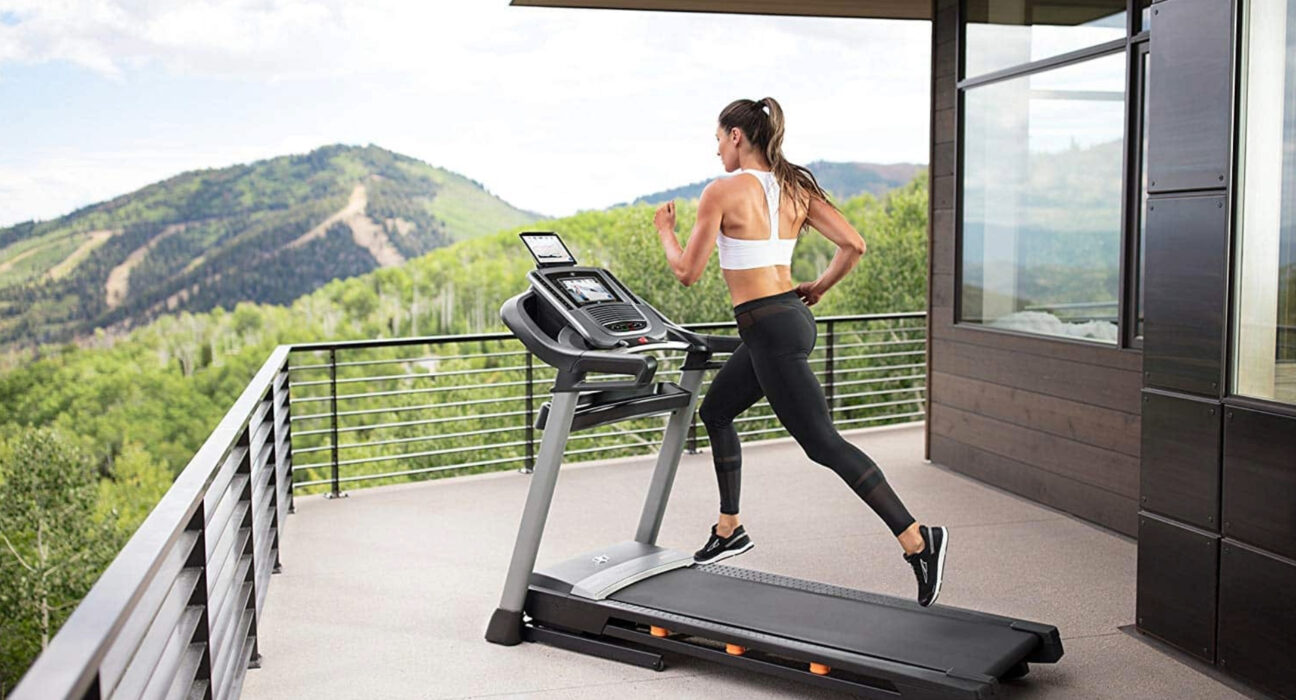Introduction:
Choosing an exercise program that fits your preferences and lifestyle is a common step in starting a fitness journey. The question of whether to run outside or on a treadmill is one that many people frequently face. Each option has a distinct set of benefits and drawbacks, and the decision ultimately comes down to personal preferences, circumstances, and goals.
1. Environmental Factors
- Fresh Air and Changing Scenery: One of the primary benefits of outdoor running is the opportunity to breathe in fresh air and enjoy a constantly changing environment. The invigorating experience of running in natural surroundings can enhance mood, reduce stress, and contribute to a sense of well-being.
- Vitamin D Exposure: Outdoor running exposes individuals to natural sunlight, promoting the synthesis of vitamin D. Vitamin D is essential for bone health, immune function, and overall well-being. Sunlight exposure during outdoor runs contributes to the body’s natural production of this vital vitamin.
- Challenges of Weather Conditions: While outdoor running offers a connection to nature, it also exposes individuals to various weather conditions. Harsh weather such as extreme heat, cold, rain, or strong winds can pose challenges and affect the overall running experience. Adequate preparation and suitable clothing are necessary to address weather-related challenges.
- Air Quality: Outdoor runners may encounter variable air quality, influenced by factors such as pollution, pollen, and allergens. Individuals with respiratory issues or allergies may need to be mindful of air quality conditions and choose running routes accordingly to minimize potential triggers.
- Terrain Variability: Outdoor terrain varies, including hills, trails, sidewalks, and pavement. While the diversity can add excitement to the run, it may also present challenges such as uneven surfaces, which can impact joint health and increase the risk of injuries.
Treadmill:
- Consistent Climate Conditions: Treadmills offer a controlled environment with consistent climate conditions. Users can set and maintain their preferred temperature and humidity levels, eliminating concerns related to extreme weather conditions.
- Allergen and Pollution Control: Treadmills provide a dust-free and allergen-controlled environment, making them ideal for individuals with respiratory issues or allergies. This controlled setting minimizes exposure to outdoor elements that could exacerbate respiratory conditions.
- Convenience and Accessibility: Treadmills are convenient and accessible, allowing users to exercise at any time without being restricted by daylight hours or weather conditions. This can be particularly advantageous for individuals with busy schedules or those who prefer the convenience of home-based workouts.
- Shock Absorption: Treadmills often feature cushioned surfaces that provide shock absorption, reducing impact on joints compared to some outdoor running surfaces. This can be beneficial for individuals with joint concerns or those recovering from injuries.
- Programmable Workouts: Treadmills offer programmable workouts with incline and speed adjustments. Users can customize their workouts based on fitness goals, simulate outdoor terrain, and control the intensity of their runs.
2. Terrain Variation
- Natural Terrain Variation: One of the primary benefits of outdoor running is the natural variation in terrain. Runners have access to diverse surfaces such as pavement, trails, grass, sand, and gravel, each offering unique challenges and opportunities for engagement. The uneven surfaces and inclines encountered during outdoor runs require greater stability and coordination, leading to increased activation of stabilizing muscles and improved balance.
- Engagement of Different Muscle Groups: Outdoor running engages a broader range of muscle groups compared to treadmill running, thanks to the varying terrain. Running uphill activates the quadriceps, hamstrings, and glutes more intensely, while downhill running engages the calf muscles and requires eccentric muscle contractions to control descent. Trail running incorporates lateral movements and requires agility, strengthening the ankles and lower legs.
- Enhanced Cardiovascular Challenge: Terrain variations such as hills and uneven surfaces increase the cardiovascular challenge of outdoor running. Running uphill elevates heart rate and oxygen consumption, providing an effective interval-style workout that enhances cardiovascular fitness and endurance. Descending hills requires controlled eccentric muscle contractions and contributes to overall cardiovascular conditioning.
- Mental Stimulation: Outdoor running offers a dynamic and ever-changing environment that provides mental stimulation and engagement. The scenic beauty, changing landscapes, and sensory experiences associated with outdoor runs can enhance mood, reduce stress, and promote a sense of well-being. The unpredictability of outdoor terrain adds an element of excitement and adventure to the running experience, keeping runners motivated and engaged.
Treadmill:
- Flat and Consistent Surface: Treadmills provide a flat and consistent surface for running, which offers stability and predictability. The uniformity of the treadmill surface reduces the risk of tripping or falling compared to outdoor terrain, making it a safer option for individuals with balance or mobility concerns.
- Adjustable Incline Settings: While treadmills lack natural terrain variation, many models offer adjustable incline settings that simulate uphill running. Users can increase the incline to target specific muscle groups, increase calorie expenditure, and replicate the challenges of outdoor hill training. Adjusting the incline also adds variety to treadmill workouts and prevents monotony.
- Controlled Environment: Treadmills provide a controlled indoor environment, allowing users to exercise regardless of weather conditions or time of day. This convenience makes treadmill running accessible and convenient for individuals with busy schedules, enabling them to maintain a consistent workout routine year-round.
- Programming Options: Treadmills often come equipped with pre-programmed workouts and customizable settings that allow users to tailor their workouts to their fitness goals and preferences. Users can adjust speed, incline, and duration to create challenging and engaging workouts that target specific fitness objectives.
3. Impact and Joint Stress
- Natural Surface Variation: Outdoor running typically involves running on natural surfaces such as pavement, trails, grass, or dirt. These surfaces often provide more give and shock absorption compared to the harder surface of a treadmill. As a result, the impact on joints may be slightly reduced when running outdoors, especially on softer surfaces like grass or trails.
- Gentler on Joints: Running on natural surfaces may be gentler on the joints compared to running on a treadmill. The softer ground can help absorb some of the impact forces generated with each footstrike, potentially reducing stress on the ankles, knees, and hips. This can be particularly beneficial for individuals with joint issues or those prone to overuse injuries.
- Risk of Uneven Terrain: While outdoor running offers the advantage of natural surface variation, it also comes with the risk of uneven terrain. Uneven surfaces, such as trails with rocks, roots, or uneven pavement, can increase the risk of tripping, twisting an ankle, or developing overuse injuries. Runners need to be mindful of their surroundings and choose running routes carefully to minimize the risk of injury.
Shock Absorption Features: Treadmills are designed with shock absorption features such as cushioned surfaces and built-in shock absorbers. These features help reduce the impact on joints by absorbing some of the forces generated with each footstrike. The cushioned surface of a treadmill provides a softer landing compared to outdoor surfaces, which can be beneficial for individuals with joint issues or those recovering from injuries. - Consistent Surface: Treadmills offer a consistent and uniform surface for running, free from the irregularities and unevenness often encountered outdoors. This consistency allows for a more predictable and controlled running experience, reducing the risk of sudden jolts or unexpected impacts that can stress the joints.
- Adjustable Settings: Many treadmills feature adjustable settings, including speed and incline, allowing users to customize their workouts to suit their fitness level and goals. By gradually increasing speed and incline, individuals can progressively challenge themselves without subjecting their joints to excessive stress or strain.
4. Motivation and Mental Well-being
- Changing Scenery and Exploration: Outdoor running offers the opportunity to explore new routes, discover scenic trails, and enjoy the natural beauty of the environment. The ever-changing scenery, whether it’s a park, waterfront, or urban landscape, can provide a sense of excitement and adventure that boosts motivation and makes running more enjoyable.
- Exposure to Nature: Running outdoors exposes individuals to fresh air, natural sunlight, and the sights and sounds of nature. The calming effect of nature can reduce stress, improve mood, and enhance mental well-being. Spending time outdoors has been linked to numerous psychological benefits, including reduced anxiety, depression, and negative emotions.
- Social Interaction: Outdoor running provides opportunities for social interaction, whether it’s running with a friend, joining a running group, or simply exchanging greetings with fellow runners along the way. Social support and companionship can increase motivation, accountability, and enjoyment of the activity.
- Sense of Freedom: Running outdoors offers a sense of freedom and independence that can be invigorating and empowering. The ability to choose your own route, set your own pace, and explore new destinations fosters a sense of autonomy and control over the running experience, contributing to improved motivation and mental well-being.
- Monotony of Indoor Running: Some individuals may find the repetitive nature of indoor running on a treadmill less motivating compared to outdoor running. The lack of changing scenery and exposure to nature can lead to feelings of monotony and boredom, potentially affecting motivation and enjoyment of the activity.
- Enhanced Features and Entertainment: To combat the monotony of indoor running, many treadmills are equipped with features such as entertainment systems, virtual workouts, and tracking metrics. Built-in screens, audio systems, and compatibility with fitness apps allow users to watch movies, listen to music, or follow interactive workouts while running, making the experience more engaging and enjoyable.
- Tracking Metrics and Progress: Treadmills offer the ability to track metrics such as distance, speed, calories burned, and heart rate in real-time. Monitoring progress and setting goals can provide a sense of accomplishment and motivation to push harder during workouts. Additionally, virtual training programs and challenges can add an element of competition and excitement to treadmill workouts, keeping users motivated and engaged.
- Climate Control: Indoor running on a treadmill provides a climate-controlled environment, allowing individuals to exercise comfortably regardless of weather conditions. This convenience can be particularly appealing during inclement weather or extreme temperatures, reducing barriers to consistent exercise and supporting mental well-being.


Conclusion:
Ultimately, whether to run on a treadmill or outside boils down to personal preference, fitness goals, and lifestyle. Combining both options can offer a well-rounded approach, allowing individuals to enjoy the benefits of each. It’s essential to consider factors such as weather, terrain preference, joint health, and overall convenience when making this decision. Whether you prefer the open road or the controlled environment of a treadmill, the most important aspect is finding a routine that keeps you motivated and committed to your fitness journey.












